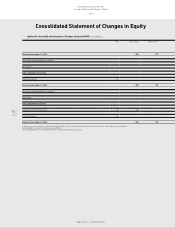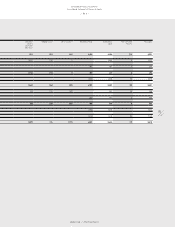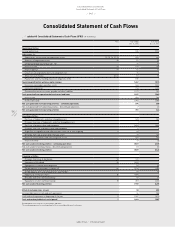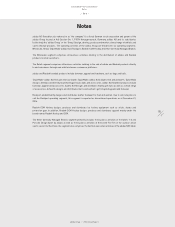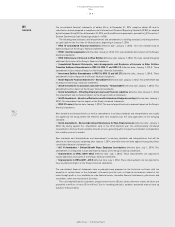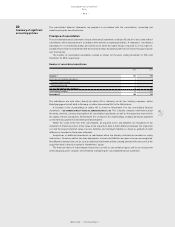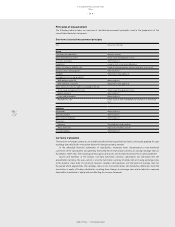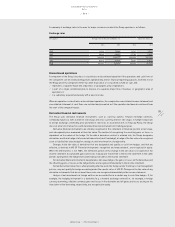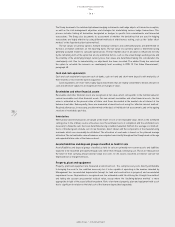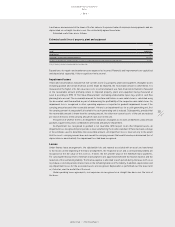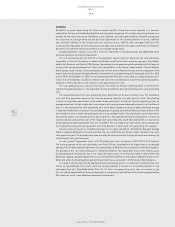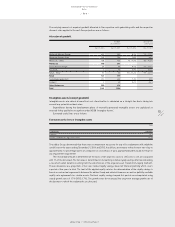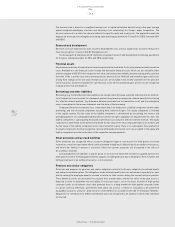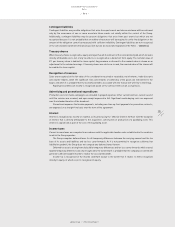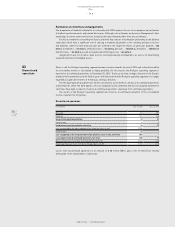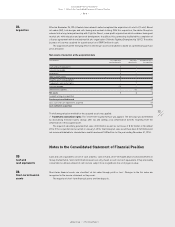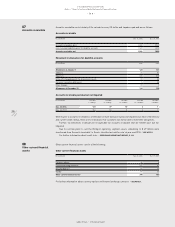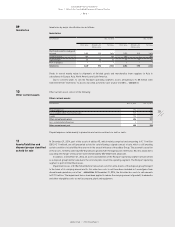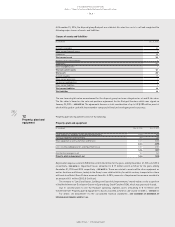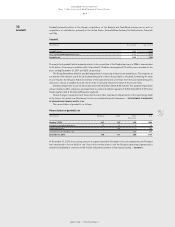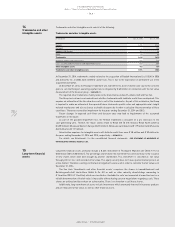Reebok 2014 Annual Report Download - page 206
Download and view the complete annual report
Please find page 206 of the 2014 Reebok annual report below. You can navigate through the pages in the report by either clicking on the pages listed below, or by using the keyword search tool below to find specific information within the annual report.
adidas Group
/
2014 Annual Report
Consolidated Financial Statements
202
2014
Notes
/
04.8
/
Goodwill
Goodwill is an asset representing the future economic benefits arising from assets acquired in a business
combination that are not individually identified and separately recognised. This results when the purchase cost
exceeds the fair value of acquired identifiable assets, liabilities and contingent liabilities. Goodwill arising from
the acquisition of a foreign entity and any fair value adjustments to the carrying amounts of assets, liabilities
and contingent liabilities of that foreign entity are treated as assets, liabilities and contingent liabilities of the
respective reporting entity, and are translated at exchange rates prevailing at the date of the initial consolidation.
Goodwill is carried in the functional currency of the acquired foreign entity.
Acquired goodwill is valued at cost and is tested for impairment on an annual basis and additionally when
there are indications of potential impairment.
The cash-generating units are defined as the geographic regions (split into wholesale and retail) which are
responsible for the joint distribution of adidas and Reebok as well as the other operating segments TaylorMade-
adidas Golf, Rockport and Reebok-CCM Hockey. The number of cash-generating units amounted to 23 at the point
in time of the annual impairment test. Due to the consolidation of five former single markets (Central Europe,
North Europe, South Europe, France and Iberia) into the new market Western Europe and the integration of the
market India into European Emerging Markets, the number of cash-generating units decreased from 32 in 2013
to 23 in 2014. At December 31, 2014, the cash-generating unit Rockport is classified as a disposal group and is
shown in ‘Assets/liabilities classified as held for sale’ due to the concrete plans to divest the operating segment,
leading to a further decrease in the number of cash-generating units to 22.
The cash-generating units represent the lowest level within the Group at which goodwill is monitored for
internal management purposes. The impairment test for goodwill has been performed based on cash-generating
units.
The recoverable amount of a cash-generating unit is determined on the basis of value in use. This calculation
uses cash flow projections based on the financial planning covering a six-year period in total. The planning
is based on long-term expectations of the adidas Group and reflects in total for the cash-generating units an
average annual mid- to high-single-digit sales increase with varying forecasted growth prospects for the different
units. For the majority of the cash-generating units of the Retail segment an increase above the Group average
is expected. Furthermore, we expect the operating margin to expand, primarily driven by an improvement in the
gross margin as well as lower operating expenses as a percentage of sales. The planning for capital expenditure
and working capital is primarily based on past experience. The planning for future tax payments is based on
current statutory corporate tax rates of the single cash-generating units. Cash flows beyond this six-year period
are extrapolated using steady growth rates of 1.7% (2013: 1.7%). According to our expectations, these growth rates
do not exceed the long-term average growth rate of the business in which each cash-generating unit operates.
Discount rates are based on a weighted average cost of capital calculation considering a five-year average
market-weighted debt/equity structure and financing costs referencing the Group’s major competitors for each
cash-generating unit. The discount rates used are after-tax rates and reflect the specific equity and country risk
of the relevant cash-generating unit.
In total, goodwill impairment losses of € 78 million have been recognised in 2014 (2013: € 52 million).
The carrying amount of the cash-generating unit Retail CIS was determined to be higher than its recoverable
amount of € 619 million and an impairment loss amounting to € 78 million was recognised in the Retail segment.
The goodwill of this cash-generating unit is completely impaired. The impairment losses were mainly caused
by adjusted growth assumptions due to the significant deterioration of the Russian rouble. In 2013, within the
Wholesale segment, goodwill impairment losses amounted to € 23 million in Iberia (part of Western Europe since
2014), and within the Retail segment goodwill impairment losses amounted to € 29 million in North America.
A change in the discount rate by approximately 0.7 percentage points or a reduction of planned free cash
inflows by approximately 12% would cause the carrying amount to exceed the recoverable amount for the
cash-generating unit TaylorMade-adidas Golf. For all other cash-generating units, even an increase in the
discount rate by approximately 1.5 percentage points or a reduction of planned free cash inflows by approximately
30% would not result in any additional impairment requirement.


